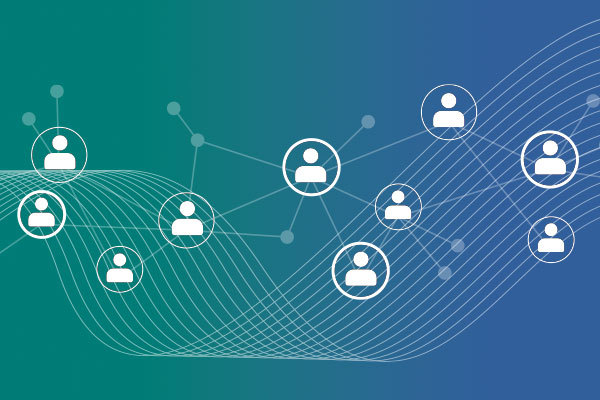The Ins and Outs of Pricing Strategy
By Argano
Jun 07, 2023
Table of Contents
Zilliant General Manager of Commercial Excellence Barrett Thompson sat down for an interview with Argano on optimal pricing strategies for the modern enterprise. The article below was originally published here.
The Ins and Outs of Pricing Strategy with Zilliant's Barrett Thompson
In our previous blog, we delved into the world of revenue intelligence, highlighting its significance for businesses and market adoption trends. We also presented five compelling reasons to invest in revenue intelligence technology: improved sales outcomes, optimized processes, better decision-making, enhanced customer retention, and sustainable competitive advantage. Ultimately, all these benefits contribute to one primary goal – boosting your business’s profitability.
In this post, we’ll examine another crucial aspect of profitability – pricing strategy. While revenue intelligence focuses on leveraging customer data and AI/ML to enable more profitable sales practices, pricing strategy is how a business determines the optimal price for its products and services. Understanding and implementing an effective pricing strategy is crucial for maximizing profits and staying ahead in today’s competitive market.
That’s why we are thrilled to be collaborating with a market leader in this field – Zilliant. As an Argano ISV partner, Zilliant brings a wealth of experience to the table. We recently had the opportunity to sit down with Barrett Thompson, general manager of commercial excellence at Zilliant, who shared his expertise spanning the ins and outs of pricing strategy. For the top takeaways from our conversation, and actionable insights that can help enhance your business’s profitability through intelligent pricing strategies, read on.
Argano:How should an organization define their fundamental pricing strategy?
Barrett Thompson:There is no one-size-fits-all approach or one optimal price point. Instead, there are optimal price points in specific contexts, such as customer type, vertical industry, and geography. It’s much more common for organizations to have differentiated pricing strategies for various business units, product lines, or customer types.
You need to ask yourself, “How does my company make money?” Are you seeking more profit, more volume, or a mix of both? Let’s take the example of a distributor. Often, their top 100 customers may not be significant profit centers, but they generate enough revenue to cover the distributor’s operational costs. The bulk of the profits come from mid-sized and small customers. This naturally leads to a differentiated pricing strategy based on customer size, ensuring steady volume from large customers while maximizing profitability from mid-to-small customers.
If you don’t understand this concept and apply a one-size-fits-all approach to your pricing, you could end up destroying value at both ends of the spectrum – with decreased revenues from large customers and weaker margins from mid-to-small customers. So, it’s imperative for organizations to carefully examine their unique circumstances and develop tailored pricing strategies that align with their specific goals and market dynamics.
What are some of the common pricing strategy challenges organizations should be mindful of?
Dealing with technical issues is a biggie. This often involves managing multiple disparate datasets, which can be difficult to consolidate into a single, comprehensive view. Additionally, stale data can lead to inaccurate or outdated insights, making it harder to develop an effective pricing strategy.
Another challenge comes in the form of process-related issues. Ensuring accuracy and efficiency in pricing updates can be time-consuming, and organizations often struggle with the Pareto principle. In other words, they might spend the same amount of effort updating the pricing for an item that sells $1,000 per year as they do for one that sells $10 million per year, which isn’t the most efficient use of resources.
Finally, you’ve got people challenges. Orgs need to establish clear discount authority guidelines, outlining who has the power to grant discounts and to what extent. And getting team members to adopt a data-driven approach rather than relying on their gut-feel can be a tough transition, but it’s crucial for a successful pricing strategy.
What is the relationship between revenue intelligence and pricing strategy, and how can the former optimize the latter?
It’s a complementary relationship for sure, with the former focusing on optimizing top-line performance (revenue) and the latter targeting bottom-line performance (margins). Together, they create a powerful synergy to drive business growth.
For instance, when revenue intelligence identifies a cross-selling opportunity for a group of customers, it’s essential to have a pricing strategy in place that supports capturing that business. Essentially, revenue intelligence serves as a guide for developing and refining pricing strategies to maximize revenue generation.
Revenue intelligence signals can also help classify customers more effectively, which directly feeds into price segmentation and overall pricing strategies. E.g., revenue intelligence can monitor how well your agreement or contract customers are meeting their annual volume commitments, alerting you if they’re falling behind. In response, you can either push for incremental volume to catch up or adjust their prices upwards to reflect their actual consumption levels. This is particularly important because you initially discounted those prices based on the expectation of receiving certain volumes in return – if those expectations aren’t met, you’ve got to reevaluate and adjust accordingly.
For those businesses just getting started with pricing strategy, what are some of the very first steps they should take?
The absolute first thing you should do is try to understand and organize the data you have at your disposal. Begin by cataloging the data you’re currently using, as well as identifying any additional data that’s available but not yet utilized – this untapped information could provide valuable insights for your pricing decisions.
Another crucial step is ensuring that there’s a clear agreement on the overall objectives within the organization. It’s not uncommon for businesses to discover that there are differing opinions or a lack of alignment in this area. Having a cohesive understanding of your pricing goals is essential for developing an effective strategy.
One effective way to address this issue and streamline the decision-making process is by establishing a pricing council. This group can bring together key stakeholders from various departments to discuss and make informed decisions about pricing strategies. By fostering open communication and collaboration, a pricing council can help businesses gain valuable insights and develop a more robust, well-rounded pricing strategy.
For more from our strategic partner Argano, listen to a recent episode of the B2B Reimagined podcast featuring Argano Chief Strategy Officer Tim Harris.



